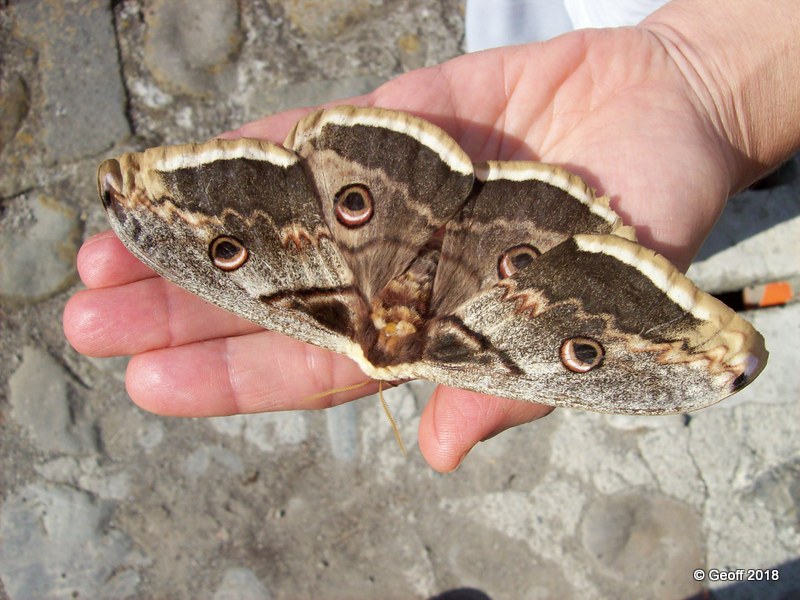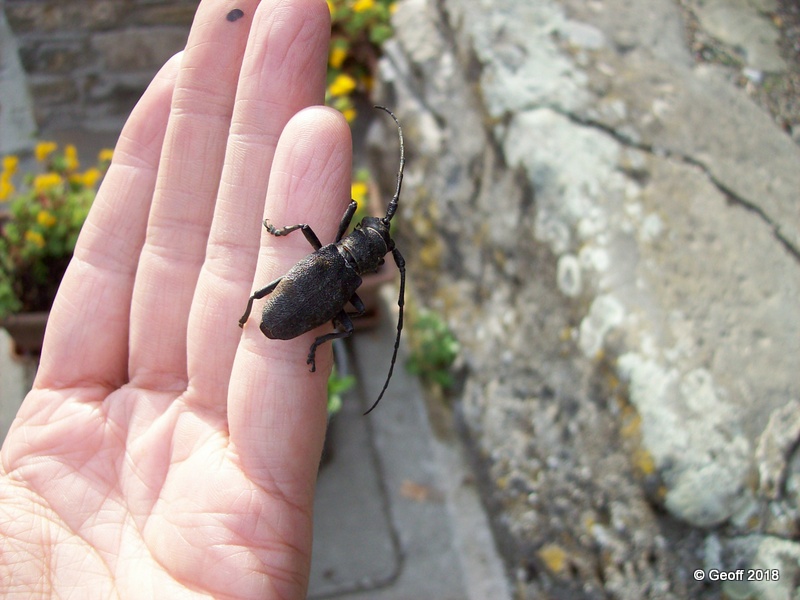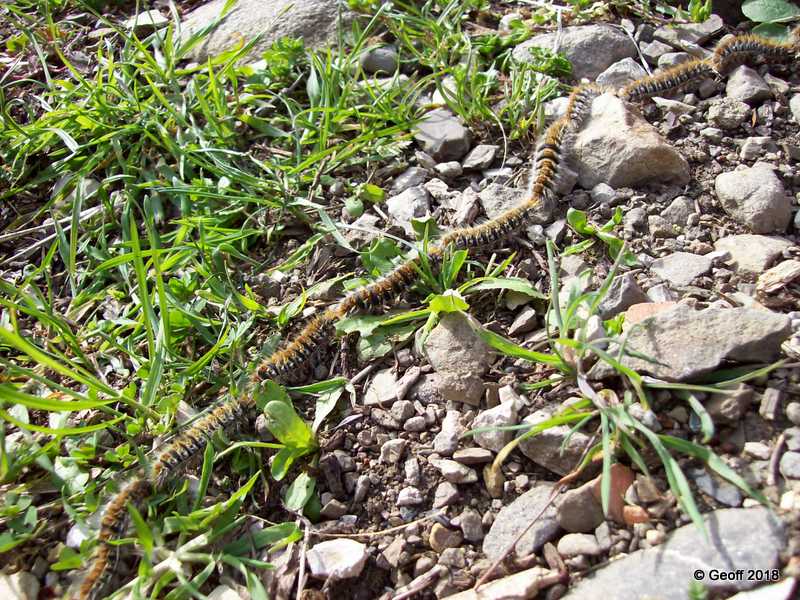Italian Insects – Part 2 Posted by Geoff on Nov 15, 2018 in Uncategorized
In Italian Insects – Part 1 I described a few of the, for want of a better word, ‘household’ insects that we see more or less all year round. But, of course, many insects are strictly seasonal …
Before we begin though, here’s a message from Meaghan, our manager at Transparent Language, explaining some changes that you may begin to notice:
“Ciao a tutti, this is Meaghan from the Social Media team here at Transparent Language. As you’ll probably soon notice, I’ve asked Geoff and Serena to publish fewer posts each month starting this month. We’re playing a balancing act with our many other language blogs and the languages that most interest our customers, so we’ve very regrettably had to sacrifice a bit of Italian each month. Don’t worry though, Geoff and Serena are not going anywhere, and we love their posts as much as you do. Forgive me for making you wait just a bit longer between posts. If you’d like to know more or have any questions about what we’re up to here at Transparent Language, don’t hesitate to reach out to me at TLsocial@transparent.com.”
Thanks Meaghan!
Now, back to gli insetti. I’ll divide the seasonal insects into those that we see from early spring until late autumn, and those that appear at more specific times. Let’s begin with the former.
La formica = the ant (plural: le formiche) is one of my favourites. She fills me with admiration and provides me with hours of entertainment. Excavating, cleaning, gathering, and even, for a couple of rare days a year, flying! She’s so organised, purposeful and loyal. During recent torrential rains, I worried about her, sheltering underground in her carefully constructed nido (nest). But when the bad weather passed, there she was together with her sisters, creating little volcano like mounds around her front door as she cleaned out the debris.
Other insects that we see throughout the warmer parts of the year are:
la mosca = the fly (plural: le mosche), yes, ho ho ho, it’s written and pronounced the same as Mosca (Moscow), so you can make jokes about la mosca di Mosca (the fly from Moscow)!
l’ape = the bee (plural: le api), that’s right, it’s also that funny little ubiquitous three wheeled truck made by Piaggio.
la vespa = the wasp (plural: le vespe), also a famous type of motor scooter, also made by Piaggio.
la farfalla = the butterfly (plural: le farfalle), and its nocturnal sister …
la falena = the moth (plural: le falene)
il coleottero = the beetle (plural: i coleotteri) comes in thousands of shapes and sizes, but the species that we see most frequently is …
lo scarabeo = the dung beetle (plural: gli scarabei), or as Serena’s mother used to call them ‘rotolacacca‘, the ‘craproller’.
Insect Photo Gallery:
As it gets hotter, other insects make their appearance, such as:
la cavalletta = the grasshopper (plural: le cavallette)
il calabrone = the hornet (plural: i calabroni), this monster can be quite unnerving, but he’s still quite beautiful … from a safe distance!
l’ape carpentiere = the carpenter bee (plural: le api carpentiere), this usually makes a big impression on foreign visitors due to its large dimensions and stunning blue black iridescent colour.
la cicala = the cicada (plural: le cicale), whose rasping call (il frinio della cicala) is synonymous with scorching hot Mediterranean landscapes.
la sfinge colibrì = the hummingbird moth (plural: le sfingi colibrì), it’s always a pleasure to see her in our garden but, due to her speed, she’s usually too elusive for me to photograph.
Then there are those species that we only see during specific periods, and these are often quite spectacular:
la lucciola = the firefly (plural: le lucciole) performs spectacular dances of light every night from late June through to mid July.
il bruco = the caterpillar (plural i bruchi). Especially impressive is la processionaria = the pine processionary (plural: le processionarie). See photo above.
la mantide religiosa = the praying mantis (plural: le mantidi religiose) is a slightly unnerving character that we see mostly during September and October. For some strange reason they have a penchant for our front door!
And finally, the little fellow that inspired these blogs …
l’insetto stecco = the stick insect (plural: gli insetti stecco). A few days ago, Serena ran into the house and grabbed the camera. “Che c’è?” I asked. “C’è un bell’insetto stecco, vieni a vedere!” she replied.
Beautifully minimalistic, and perfectly camouflaged, if he hadn’t decided to take a rest on the window frame of our little dependance we’d never have spotted him in a million years. In fact, in over 11 years of living here, this is only the second one we’ve seen!
Of course, there are many many more insects that I haven’t mentioned, and my apologies go out to them. Sorry insects, but this is just a simple blog, not an encyclopaedia!
Now, humans, would you like to share an Italian insect experience with us? Please leave a comment.

Build vocabulary, practice pronunciation, and more with Transparent Language Online. Available anytime, anywhere, on any device.









Comments:
Joan Engelhaupt:
I was so very sorry to read Meaghan’s announcement! Since I really don’t understand the necessity for this, I’ll write her an email and ask for further clarification. I love your blogs so much, have learned so much from them, and over the years have come to feel I know both of you and appreciate you so much!
Geoff:
@Joan Engelhaupt Well Joan, at first it looked like the blog might disappear altogether! But we’ve still got 6 a month. Better than nothing right? 🙂
However, I encourage you to write to Meaghan, she’s always very amenable and will hopefully be able to explain to you what’s going on with Transparent Language.
Thanks for your kind words, a presto, Geoff.
Jan:
I am also very sorry to hear of the redyction in number of blogs…I rely on them to help me improve my Italian. They are so inspiring and enjoyable and I really appreciate them . Feeling sad?
Geoff:
@Jan Thanks Jan, we’ll do our best to keep the reduced number of blogs as interesting and relevant as possible.
Saluti da Geoff 🙂
Kirstie:
Tieni una falena feminile si chiama Emperor Moth In inglese.
Geoff:
@Kirstie Grazie Kirstie!
A presto, Geoff 🙂
paolo:
E dov è il più amato insetto di tutto, lo scarafaggio?
l’insetto stecco è veramente incredibile. Non l’ho mai visto.
MARIA POSILOVIC:
I am sorry about your blog being shorten. I really don’t understand the reason why such a good blog is cut down when the teachings are so accurate and professional.
Geoff:
@MARIA POSILOVIC Ciao Maria, if you write to Meaghan at Transparent Language (the e-mail address is in the blog) I’m sure she’ll be happy to explain.
Glad you enjoy the blog! 🙂
Christina V.:
Hello to Geoff and Serena!
I so enjoy your blog posts. I’m an Italian instructor in Canada and I find your posts to be great inspirations for lesson ideas. I share your blog with my students as they often ask me where they might be able to learn more Italian or complement our classes. So, thank you!
I was disappointed to read Meaghan’s message because, sadly, it is a grim reflection of what is happening in universities and colleges around the world: Italian programs and humanities courses are being slashed. I thought a blog that lived online would somehow be immune to this! If there is anything that we, as your readers, can do to keep up the current frequency of posts (if that is something that you would like, of course!), please don’t hesitate to ask.
Con ammirazione e gratitudine,
Christina
Geoff:
@Christina V. Ciao Christina,
your best recourse is to contact Meaghan directly. She is very supportive of what Serena and I do, and gives us a lot of freedom to develop the blog as we see fit. But at the end of the day we bloggers have very little influence when it comes to the overall direction that Transparent have decided to take.
I’m sure Meaghan would be happy to have your feedback, the blogs are her ‘baby’ and she wants to try and maintain them as much as possible.
Grazie mille, Geoff e Serena 🙂